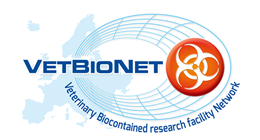New review says application of humane endpoints needs to improve
A retrospective review of German animal research proposals conducted by Herrmann and Flecknell[1] has identified that the vast majority of the proposed humane endpoints were poorly described, unclear, generally not procedure specific and were late stage. Thus, leading them to the conclusion that most humane endpoints in the examined proposals could and should be improved. They also propose that this is indicative of a lack of actual use of refinement methods in practice resulting from either a lack of knowledge of what can be implemented or a lack of understanding of the importance of refinements for animal welfare and scientific quality. The review gives a range of detailed examples and discusses recommendations for improving the situation overall.
Humane endpoints are a key implementation of the third R, Refinement, in animal experimentation. A humane or less-inhumane endpoint is the ‘earliest indicator in an animal experiment of (potential) pain and/or distress that, within its scientific context and moral acceptability can be used to avoid or limit adverse effects by taking actions such as humane killing, terminating the study or alleviating the pain and distress’[2]. In recent years there has been an increase in research in the area of refinement but Herrmann and Flecknell1 argue that animals can only benefit from these efforts if the new knowledge is implemented in practice. Hence, they reviewed animal experiment proposals submitted in 2010 for authorisation by the German regulators for information on the use of humane endpoints and assessed whether the planned humane endpoints appeared appropriate.
Despite the use of humane endpoints being a legal requirement in many countries and their use being generally considered as best practice Herrmann and Flecknell1 found significant deficits in reporting of humane endpoints and problems with those that were described in the surveyed proposals. They make the following recommendations to address these issues:
- Increased effort by the scientific community to find earlier experimental endpoints
- Increase the use of new technologies and other advancements used in humans to benefit animals e.g. biomarkers and non-invasive imaging
- Establish international working groups with expertise in 3Rs and their respective research fields to review the validity of particular animal models and if proven valuable research and provide recommendations for refining those models.
Refinement is an important aspect of the 3Rs approach to animal experimentation, it can lead to profound and direct welfare benefits for laboratory animals as such as much as possible must be done by the scientific community to ensure it is effectively and widely implemented.
There are resources available to help researchers to develop and include humane endpoints in their project proposals such as the 3Rs-Centre ULS, ‘Humane endpoints in laboratory animal experimentation’ website[3]. In addition, the European Society for Alternatives to Animal Testing (EUSAAT) Congress to be held in Linz, Austria, 10-13 October 2019 will have a session on Refinement: best practice approaches, animal welfare, avoidance of severe suffering, culture of care (see the EUSAAT website for further details[4]).
[1] Herrmann K. and Flecknell P. (2018) The application of humane endpoints and humane killing methods in animal research proposals: A retrospective review. ATLA 46: 317-333.
[2] Hendriksen C. Morton D and Cussler K. (2011). Use of humane end points to minimise suffering. In the Cost Manual of Laboratory Animal Care and Use (eds. B Howard, T Nevalainen and G Perretta), pp. 333-353. USA: CRC Press.
[3] https://www.humane-endpoints.info/en (accessed 15.4.2019).
[4] https://www.eusaat-congress.eu/ (accessed 15.4.2019).

